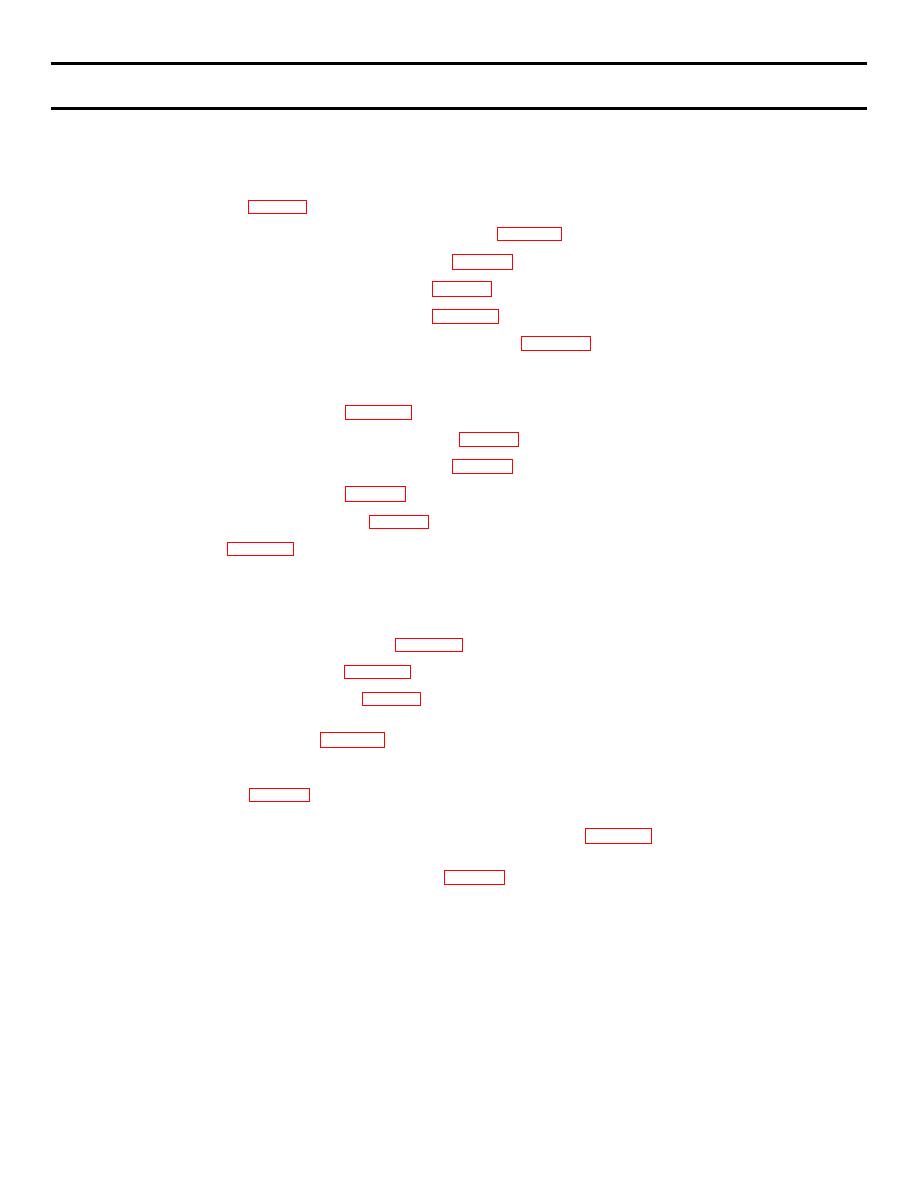
| Tweet |

Custom Search
|
|

|
||
 MALFUNCTION
TEST OR INSPECTION
CORRECTIVE ACTION
Step 5. Check for water in the fuel.
Drain and clean entire fuel system; prime fuel system.
Step 6. Check for internal binding.
B3ar engine over manually; if unable to turn engine, check for foreign objects in gears, on top of piston, and
for piston seizure.
Step 7. Check for improper valve clearance.
Adjust valves (para 5-7).
Step 8. Check for clogged or dirty filters.
Clean primary filter, replace secondary filter if clogged (para 5-15).
Step 9. Check for leaky cylinder head gasket.
Clean head and block surfaces; replace gasket (para 5-3).
Step 10. Check for burned or sticking valves.
Clean and grind valves, replace as required (para 5-7).
Step 11. Check for faulty injection nozzle.
Clean and grind valves, replace as required (para 5-13).
Step 12. Check for low cooling water temperature.
Remove, clean, and check thermostat; replace as required (para 5-20).
2. LOSS OF POWER.
Step 1. Check for air in fuel lines.
Check connection; bleed fuel system.
Step 2. Check for clogged air cleaner.
Clean and service air cleaner (para 5-17).
Step 3. Check if piston rings are worn or broken.
Check and replace rings not up to specifications (para 5-4).
Step 4. Check for leaky cylinder head gasket.
Clean head and block surfaces; replace gasket (para 5-3).
Step 5. Check for valves holding open, no tappet clearance.
Adjust valve tappet clearance (para 5-7).
Step 6. Check if cylinder liner inlet ports are clogged.
Remove cylinder liners and clean (para 5-5).
Step 7. Check for carbon on injection nozzle tips.
Clean tips (para 5-13).
3. BLACK OR GRAY SMOKE.
Step 1. Check if engine is overloaded.
Reduce load.
Step 2. Check for high exhaust back pressure.
Check for obstruction in exhaust.
Step 3. Check for low engine cooling water temperature.
Check thermostats, raise temperature (para 5-20).
Step 4. Check if air cleaner is clogged.
Clean and service air cleaner (para 5-17).
Step 5. Check if cylinder liner ports are clogged.
Remove cylinder liner and clean (para 5-5).
4. BLUE SMOKE.
Step 1. Check for pull over of lubricating oil from air cleaner.
Check oil level in cleaner (para 5-17).
Step 2. Check for too much oil in crankcase.
Check crankcase lube oil level on dip stick, drain to FULL mark if necessary.
Step 3. Check for worn or stuck rings.
Replace rings (para 5-4).
5. WHITE SMOKE.
Step 1. Check for faulty injector nozzle.
Clean and test faulty nozzles for pressure leakage and spray pattern (para 5-13).
Step 2. Check if water leaking into combustion chamber.
Isolate fuel injection system of each cylinder, one at a time, to determine which cylinder has water leak.
Remove cylinder head, determine leak source (para 5-3).
6 ENGINE DETONATES.
Step 1. If there is a hard knock indicating detonation in one or more cylinders, STOP engine immediately to prevent serious
damage due to excess of pressure.
Detonation is caused by the presence of fuel or lubricating oil in the cylinder during the compression stroke.
This may be caused by leaky injectors or by improper timing of fuel injection pump and sometimes by
lubricating oil working up from the crankcase into the combustion chamber. Knocks other than fuel are
either from loose bearings, pistons, flywheels, improperly adjusted valves, or blowby caused by broken or
stuck piston rings. Trouble from knocking, other than fuel knocks, can usually be found by the naure of the
t
sound, under different load conditions and by cutting out one cylinder at a time. When the loose or in-
correctly adjusted part is found, the remedy is usually obvious and references to articles under part effected
will be found helpful in making needed correction.
3-13
|
||
 |
||